
How to Use step down 6-35 V: Examples, Pinouts, and Specs
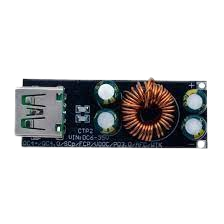
 Design with step down 6-35 V in Cirkit Designer
Design with step down 6-35 V in Cirkit DesignerIntroduction
The Step Down 6-35 V voltage regulator, manufactured by Elektric (Part ID: Luigi), is a versatile DC-DC buck converter designed to reduce input voltages ranging from 6V to 35V down to a stable, user-defined output voltage. This component is ideal for powering low-voltage devices from higher-voltage sources, ensuring efficient and reliable operation.
Explore Projects Built with step down 6-35 V
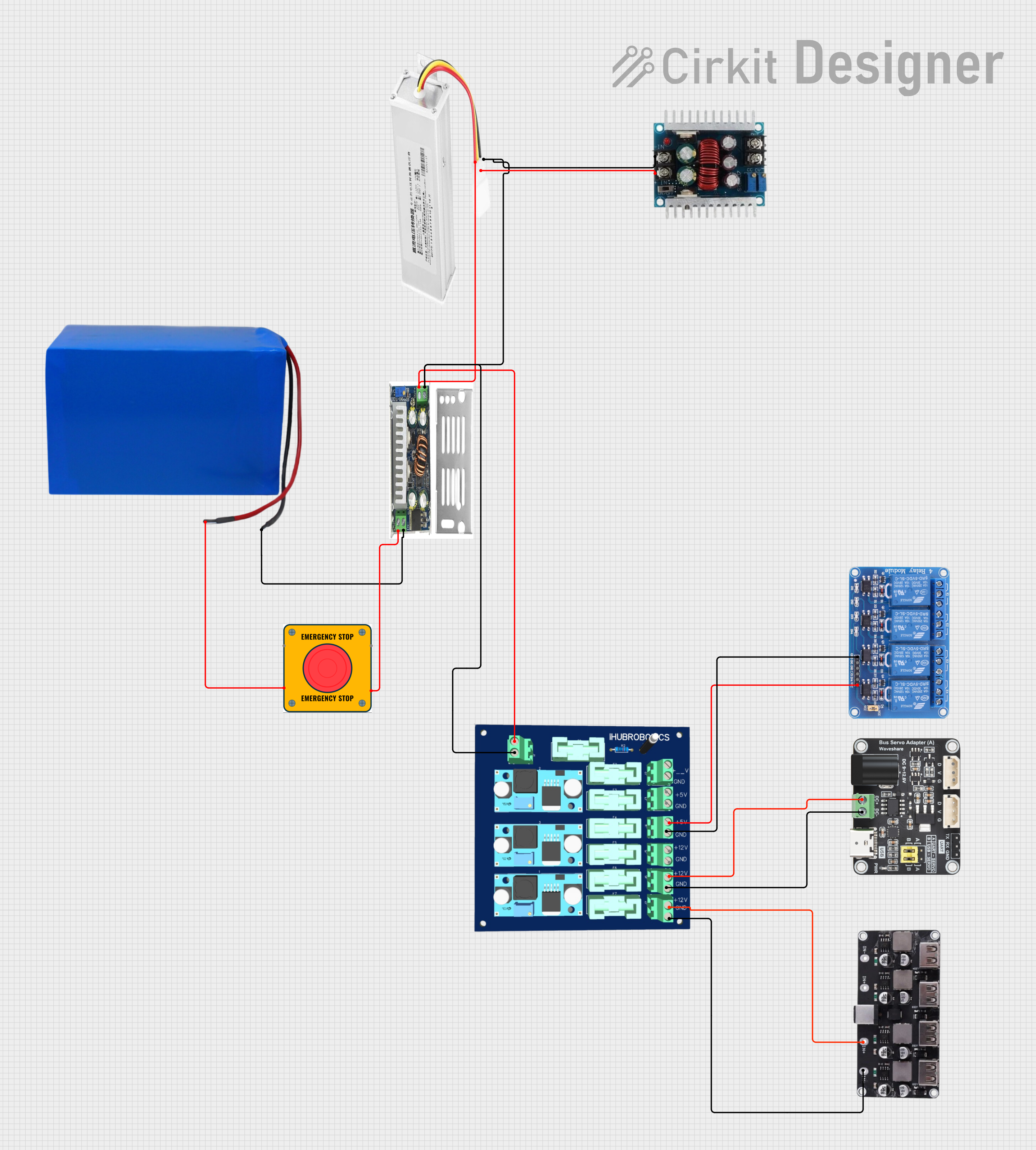
 Open Project in Cirkit Designer
Open Project in Cirkit Designer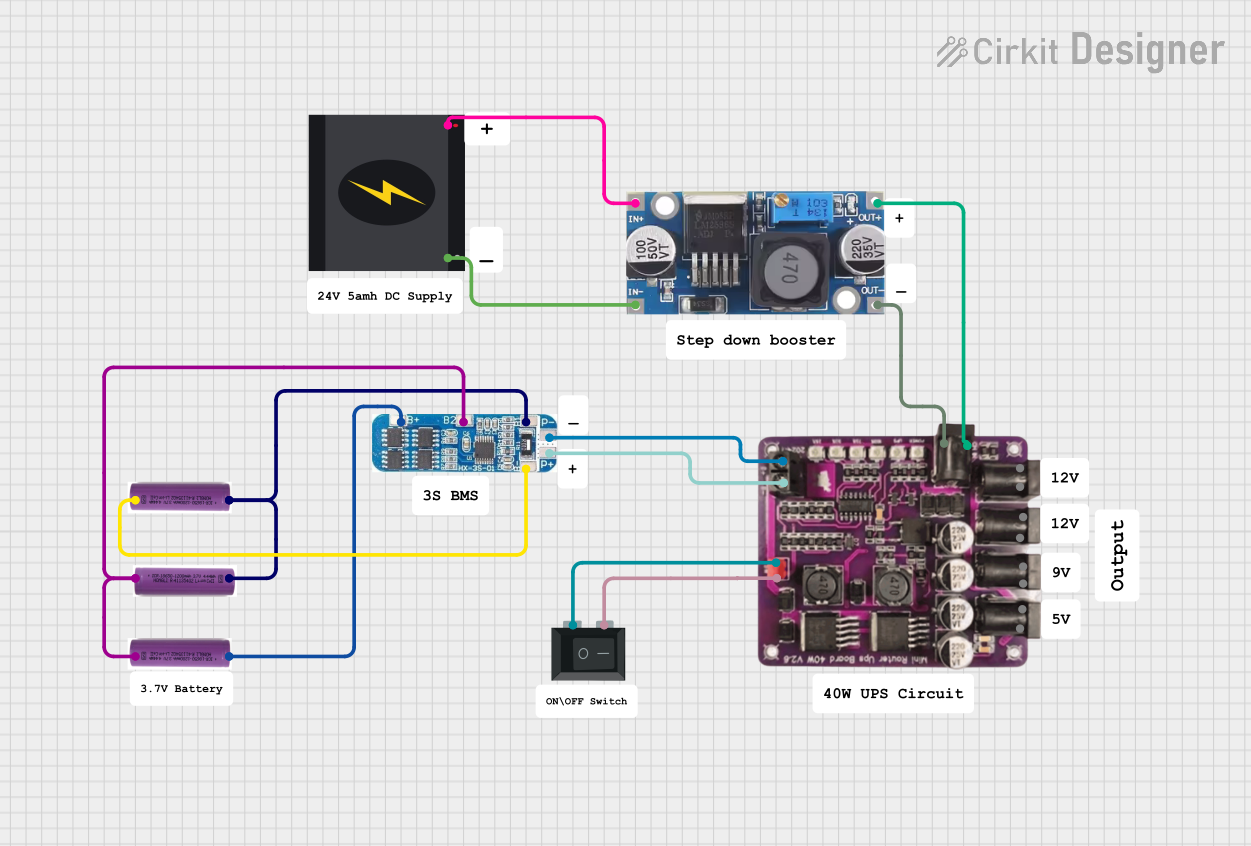
 Open Project in Cirkit Designer
Open Project in Cirkit Designer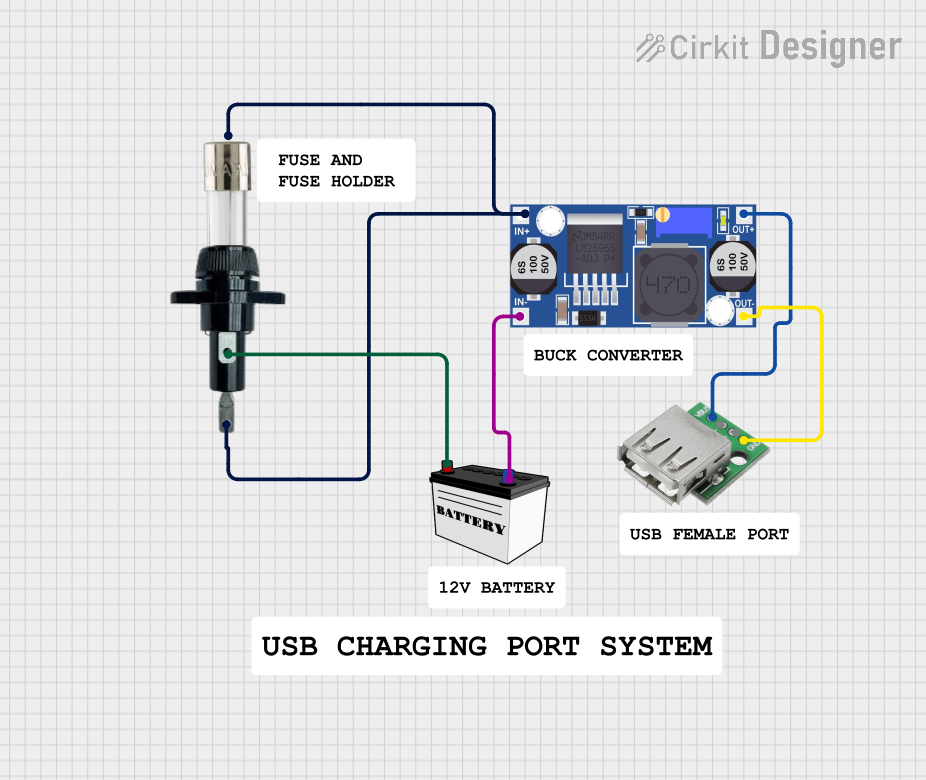
 Open Project in Cirkit Designer
Open Project in Cirkit Designer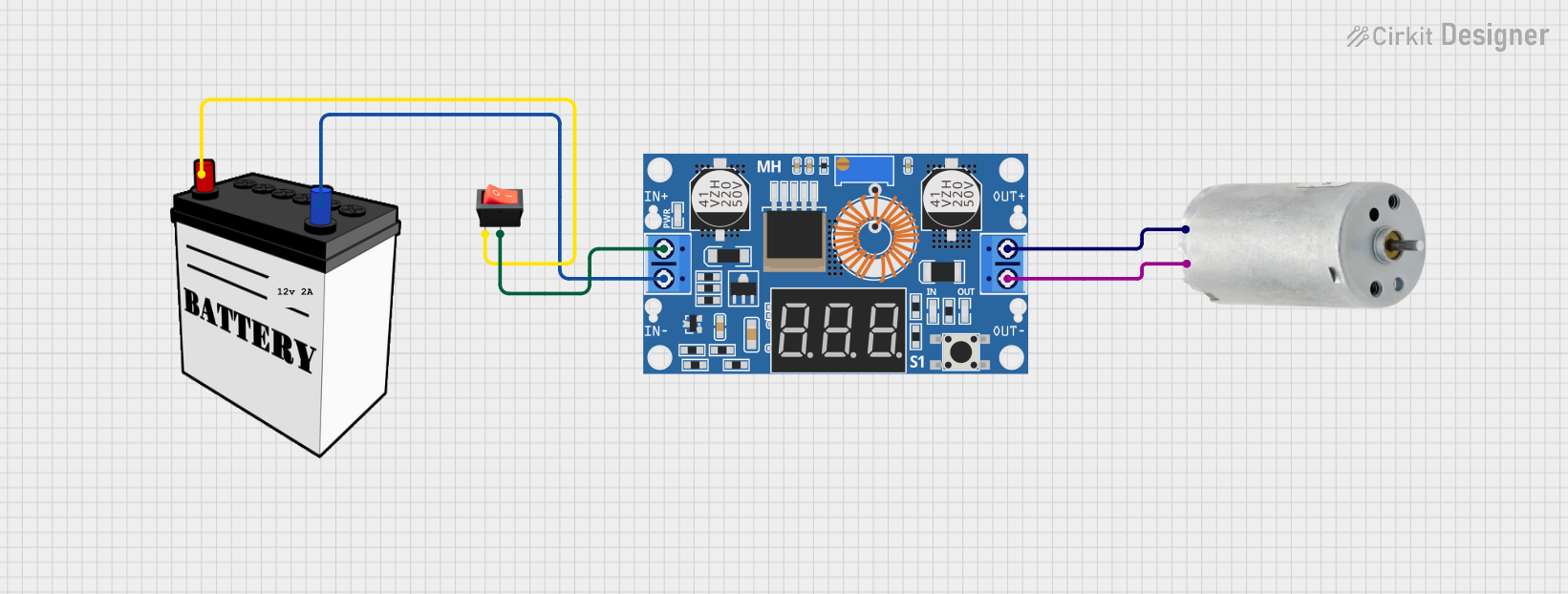
 Open Project in Cirkit Designer
Open Project in Cirkit DesignerExplore Projects Built with step down 6-35 V

 Open Project in Cirkit Designer
Open Project in Cirkit Designer
 Open Project in Cirkit Designer
Open Project in Cirkit Designer
 Open Project in Cirkit Designer
Open Project in Cirkit Designer
 Open Project in Cirkit Designer
Open Project in Cirkit DesignerCommon Applications and Use Cases
- Powering microcontrollers, sensors, and modules in embedded systems
- Converting battery voltage to a stable level for portable devices
- Supplying power to LED strips, fans, and other low-voltage components
- Voltage regulation in automotive and industrial applications
Technical Specifications
The following table outlines the key technical details of the Step Down 6-35 V voltage regulator:
| Parameter | Specification |
|---|---|
| Input Voltage Range | 6V to 35V |
| Output Voltage Range | 1.25V to 30V (adjustable) |
| Maximum Output Current | 3A (with proper heat dissipation) |
| Efficiency | Up to 92% |
| Switching Frequency | 150 kHz |
| Operating Temperature | -40°C to +85°C |
| Dimensions | 43mm x 21mm x 14mm |
Pin Configuration and Descriptions
The Step Down 6-35 V regulator typically has the following pinout:
| Pin Name | Description |
|---|---|
| VIN | Input voltage (6V to 35V) |
| GND | Ground connection |
| VOUT | Regulated output voltage (1.25V to 30V) |
| ADJ | Voltage adjustment pin (via potentiometer) |
Usage Instructions
How to Use the Component in a Circuit
Connect the Input Voltage (VIN):
Attach the positive terminal of your power source (6V to 35V) to the VIN pin and the negative terminal to the GND pin.Set the Desired Output Voltage:
Use the onboard potentiometer to adjust the output voltage. Turn the potentiometer clockwise to increase the voltage and counterclockwise to decrease it. Use a multimeter to measure the output voltage at the VOUT pin for precise adjustment.Connect the Load:
Attach the positive terminal of your load to the VOUT pin and the negative terminal to the GND pin. Ensure the load does not exceed the maximum current rating of 3A.Heat Dissipation:
If the regulator operates at high currents or with a significant voltage drop, attach a heatsink to the module to prevent overheating.
Important Considerations and Best Practices
- Input Voltage: Ensure the input voltage is always higher than the desired output voltage by at least 1.5V for proper regulation.
- Current Limitation: Do not exceed the maximum output current of 3A. Use a heatsink or active cooling for high-power applications.
- Polarity Protection: Double-check the polarity of the input and output connections to avoid damaging the module.
- Noise Filtering: For sensitive applications, consider adding input and output capacitors to reduce voltage ripple and noise.
Example: Using with an Arduino UNO
The Step Down 6-35 V regulator can be used to power an Arduino UNO from a 12V source. Below is an example circuit and code:
Circuit Connections
- Connect the 12V power source to the VIN and GND pins of the regulator.
- Adjust the output voltage to 5V using the potentiometer.
- Connect the VOUT pin to the Arduino UNO's 5V pin and the GND pin to the Arduino's GND.
Arduino Code Example
// Example code to blink an LED connected to pin 13 of the Arduino UNO
// Ensure the Arduino is powered via the Step Down 6-35 V regulator
void setup() {
pinMode(13, OUTPUT); // Set pin 13 as an output
}
void loop() {
digitalWrite(13, HIGH); // Turn the LED on
delay(1000); // Wait for 1 second
digitalWrite(13, LOW); // Turn the LED off
delay(1000); // Wait for 1 second
}
Troubleshooting and FAQs
Common Issues and Solutions
No Output Voltage:
- Cause: Incorrect input polarity or loose connections.
- Solution: Verify the input voltage polarity and ensure all connections are secure.
Output Voltage Not Adjustable:
- Cause: Faulty potentiometer or incorrect adjustment.
- Solution: Check the potentiometer for damage and adjust it carefully while monitoring the output voltage.
Overheating:
- Cause: High current draw or insufficient heat dissipation.
- Solution: Attach a heatsink or reduce the load current.
Voltage Ripple or Noise:
- Cause: Insufficient filtering or high-frequency interference.
- Solution: Add capacitors (e.g., 100µF electrolytic and 0.1µF ceramic) to the input and output.
FAQs
Q: Can this regulator step up voltage?
A: No, this is a step-down (buck) regulator and cannot increase the input voltage.
Q: What happens if the input voltage drops below 6V?
A: The regulator may stop functioning or output an unstable voltage.
Q: Can I use this module to charge batteries?
A: Yes, but ensure the output voltage and current are appropriate for the battery type and charging requirements.
Q: Is the module protected against short circuits?
A: No, this module does not have built-in short-circuit protection. Use external protection if needed.